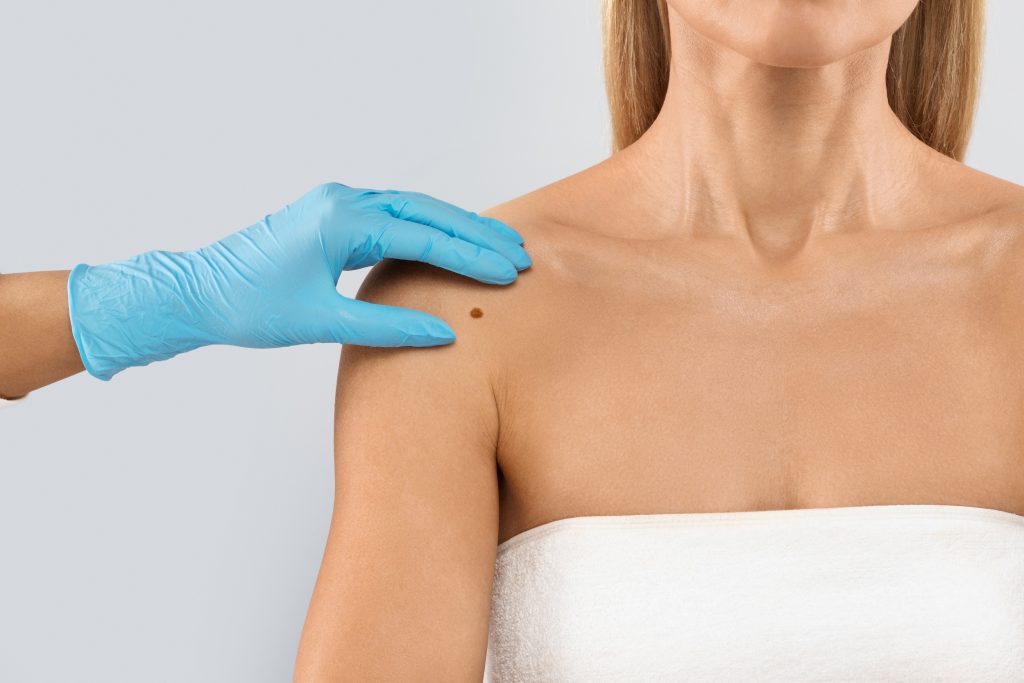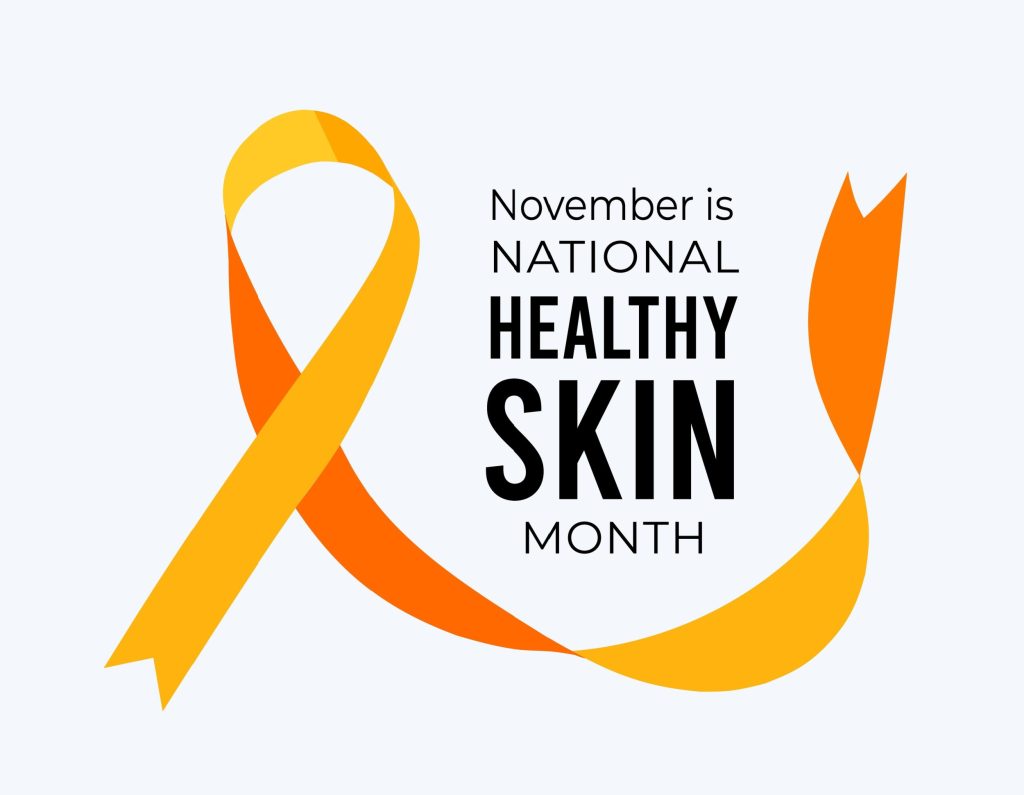
Melanoma often lives in the spotlight when it comes to discussions of skin cancer, and for good reasons. Although it represents a smaller fraction of total skin cancer cases, melanoma is responsible for the majority of skin cancer-related deaths due to its aggressive nature. According to the American Cancer Society, more than 100,000 new melanomas will be diagnosed this year alone, and more than 8,400 people will lose their lives to the disease. It’s imperative to keep this type of skin cancer at the forefront of early prevention and detection, however, melanoma is not the only skin cancer worthy of our attention.
The vast majority of skin cancers are nonmelanoma skin cancers, including basal cell carcinoma and squamous cell carcinoma, which are far more common, together accounting for more than 90% of all skin cancer diagnoses. Although these cancers tend to grow more slowly and carry a lower risk of metastasis compared to melanoma, they can still cause significant issues, specifically if they are left untreated or occur in cosmetically sensitive areas such as the face.
In recognition of Skin Cancer Awareness Month, it’s important to broaden our focus beyond melanoma and learn how to detect, treat, and prevent other common types of skin cancers. Let’s take a look at a few now.
Basal Cell Carcinoma (BCC)
Basal cell carcinoma is the most common type of skin cancer, with an estimated 3.6 million cases diagnosed in the U.S. each year. * This skin cancer forms from the basal cells in the deepest layer of the epidermis. They tend to develop on sun-exposed areas like the face, ears, scalp, and neck. They don’t typically metastasize, but the lesions do have the potential to cause tissue destruction and disfigurement if not detected early.
How to Detect
- It could be a shiny or see-through bump on your skin, and you might see little blood vessels in it.
- Sometimes, it forms a sore in the middle that doesn’t heal and has raised, rounded edges.
- In rare cases, it can be darker in color and might look like a mole or even skin cancer like melanoma.
Treatment Options
- Surgical Excision – A doctor will cut out the skin cancer along with a small border of healthy skin to make sure all the cancer is removed.
- Mohs Micrographic Surgery – Mohs surgery is conducted in stages by a licensed and specially trained dermatologist or surgeon. During the procedure, the cancerous tissues are removed layer by layer. The doctor only takes what’s necessary and leaves as much healthy skin as possible.
- Curettage and Electrodessication – This is a simple, in-office procedure where the doctor scrapes away the cancerous growth with a special tool, then uses a small electric current to burn the area. This doesn’t usually require stitches and is quick.
- Radiation Therapy – Sometimes the use of radiation therapy is required. It uses targeted beams of energy to destroy cancer cells. This can be a good option for hard-to-reach areas.
Squamous Cell Carcinoma (SCC)
Squamous cell carcinoma is the second most common form of skin cancer. * Nearly 1.8 million cases of SCC are diagnosed in the United States each year. This type of skin cancer forms when the flat cells on the outer layer of the skin (called squamous cells) start to grow out of control. This happens primarily from prolonged UV radiation damage from the sun or tanning beds.
How to Detect
- You might see a hard, red bump that feels rough or looks like a sore that doesn’t heal.
- Sometimes it grows really fast and looks like a round lump with a crusty center—that kind can be tricky to tell apart from skin cancer.
- You could also notice dry, scaly spots from too much sun; these spots aren’t cancer yet, but they can turn into it if not treated.
Treatment Options
Treatment for SCC’s are the same as BCC’s and involve surgical excision, Mohs surgery, curettage and electrodessication, as well as radiation therapy.
Other Less Common Types of Skin Cancer
Merkel Cell Carcinoma
This is a rare but fast-growing type of skin cancer. It usually shows up as a firm, painless bump that grows quickly—often on skin that gets a lot of sun, especially in older adults. It needs to be removed with surgery, and doctors may also check nearby lymph nodes and use treatments like radiation or newer types of medicine to help fight it.
Dermatofibrosarcoma Protuberans (DFSP)
This one is also rare and grows slowly. It might look like a firm, skin-colored or reddish lump that slowly gets bigger over time. Doctors usually remove it with a special kind of surgery that takes out the lump along with a bit of extra skin to make sure it’s all gone.
Kaposi Sarcoma
This cancer is linked to a virus and usually shows up in people with weakened immune systems, like those with HIV. It can cause purple, red, or brown spots or bumps on the skin, and sometimes inside the mouth or other parts of the body. Treatment depends on the cause but can include medication for the immune system, or cancer-fighting treatments if needed.
Prevention & Staying Vigilant
Prevention and early detection are among the greatest tools you can have when it comes to beating all types of skin cancer. Here are a few of our recommendations:
Check Your Skin for Changes
- Pick a Regular Time: Check your skin once a month in a bright room using a full-length mirror. Use a hand mirror to help you see tricky spots like your back.
- Remember Your ABCDEs: Watch for moles that look asymmetrical, have bumpy or uneven borders, show different colors, are bigger than 6mm across (diameter), or are evolving (changing over time).
- Look for Other Spots Too: Not everything will look like a mole! Keep an eye out for shiny bumps, rough red patches, or fast-growing lumps.
- Take Pictures: If you find anything weird, take a photo and write down the date. This will help you see if it’s changing.
- Get It Checked Out: If you spot anything new, changing, bleeding, itching, or hurting, make an appointment with a dermatologist to be safe!
Reduce Your Risk
Sun Protection:
- Apply broad-spectrum SPF 30+ sunscreen daily, reapplying every two hours and after swimming or sweating.
- Seek shade between 10 AM and 4 PM, when UV rays are strongest.
- Wear sun-protective clothing—long sleeves, wide-brimmed hats, and UV-blocking sunglasses at a minimum.
Avoid Tanning Beds:
- Artificial UV sources significantly increases the risk of both melanoma and other skin cancers.
Healthy Habits:
- Maintain a balanced diet rich in antioxidants (fruits, vegetables) to support skin health.
- Stay hydrated and avoid smoking, which impairs skin repair mechanisms.
Professional Screenings:
- Individuals at higher risk (ex: fair skin, extensive sun exposure, family history) should see a dermatologist annually for a full-body exam.
Skin Cancer Awareness Month is the perfect time to remember that taking care of our skin is a priority – not just when it comes to melanoma, but all types of skin cancer. Knowing what to look for, like the common types (basal cell and squamous cell carcinomas) and even the rare but serious ones like Merkel cell carcinoma, gives you the power to catch problems early. When you protect your skin from the sun, check yourself regularly, and see a dermatologist annually, you’re taking huge steps to stay healthy. At the end of the day, no one knows your skin better than you do.
About Us
FLDSCC’s team of providers are experts in diagnosing and treating skin cancers; skin conditions and diseases such as eczema, rosacea, dry skin, rashes, and warts; and chronic skin diseases and infections, while simultaneously tackling aging skin, wound care, and a multitude of other skin, hair, and nail concerns.
Several FLDSCC providers are fellowship-trained in Mohs micrographic surgery, an effective state-of-the-art treatment for most types of skin cancers. Mohs surgery involves minimal discomfort and encourages the greatest preservation of healthy tissue, which means less risk of scarring and superior cosmetic results.
FLDSCC has many convenient locations throughout the state. For more information, visit www.fldscc.com, or call (855) FLD-SKIN.
*Facts and figures derived from the Skin Cancer Foundation 2025.


